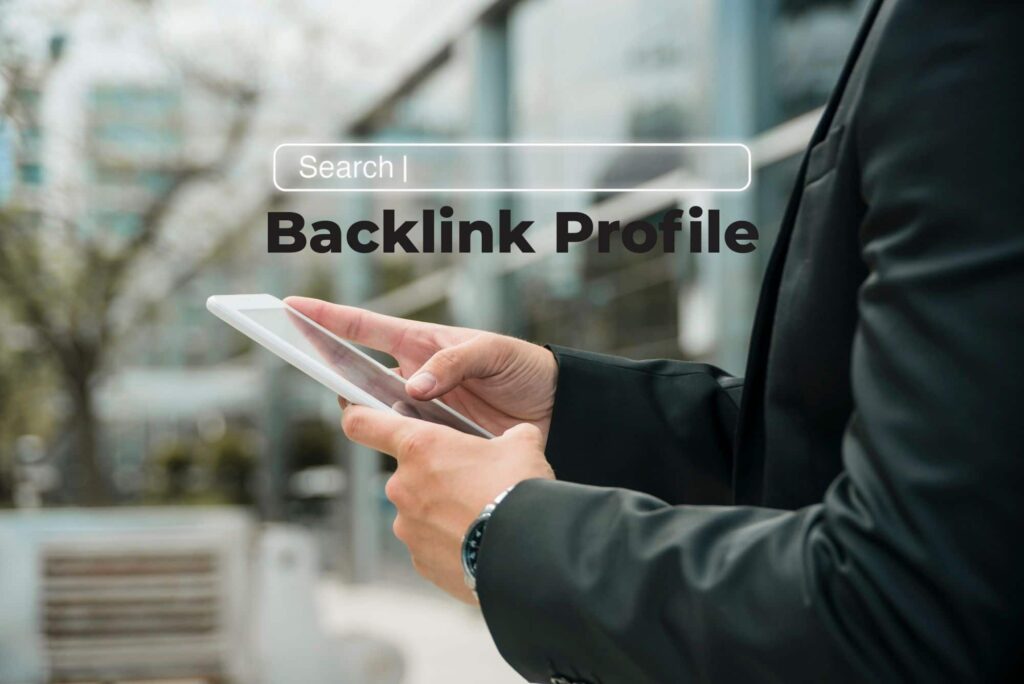The realm of eCommerce has experienced a substantial change in recent times, and a term that summarizes this change is “Connective eCommerce.” This shift surpasses conventional online retail, highlighting the smooth incorporation of different elements, technologies, and channels to establish a unified and interconnected shopping experience. This extensive article will examine the complexities of Connective eCommerce, investigating its fundamental elements, technological facilitators, advantages, obstacles, and the influence it has on businesses of all sizes.
Definition of Connective eCommerce
Connective eCommerce is a concept that involves bringing together various aspects within the online retail environment. It’s about creating a smooth and interconnected shopping experience for consumers. Imagine it as weaving different components of online shopping seamlessly to make the entire process more user-friendly and connected.
Evolution of eCommerce Landscape
It’s critical to examine the growth of traditional online shopping to comprehend the development of Connective eCommerce. In the early days, online shopping was more basic. Still, with time, it has transformed into a more sophisticated and interconnected system, giving rise to what we now call Connective eCommerce.
Importance of Connectivity in eCommerce
This point emphasizes the vital role of connectivity in online business. Seamless connectivity is crucial for both customer satisfaction and the success of businesses in today’s digital era. Think of it as the glue that holds together the different elements of online retail, ensuring a smooth and integrated experience for both businesses and consumers alike.
Is Connective eCommerce the Same as Dropshipping?
Connective eCommerce and dropshipping are different, although they are related concepts within online retail. The term “connected ecommerce” describes using platforms and technology to logically link several facets of an e-commerce enterprise, including order processing, inventory control, and customer relationship management. It focuses on creating a cohesive and integrated online shopping experience for the retailer and the customer.
On the other hand, dropshipping is a business model within ecommerce where the retailer needs to keep the products in stock. Instead of purchasing the product from the manufacturer and shipping it to the customer, the retailer buys it from a third party and has it shipped directly. The retailer does not have to handle the product directly, minimizing upfront investment and logistical challenges.

Connective e-commerce emphasizes integrating various e-commerce processes; dropshipping is a specific product sourcing method and order fulfillment within the e-commerce landscape. Both are important components of a successful online retail strategy but are different.
Key Components of Connective eCommerce
Omnichannel Integration
One of the fundamental components of connective eCommerce is omnichannel integration. It links many sales channels, including social media platforms, mobile apps, internet retailers, and physical storefronts, to give customers a smooth, multi-channel purchasing experience. By integrating these channels, retailers can ensure that customers can access consistent product information, pricing, and promotions regardless of their shop. This integration also enables retailers to offer convenient options such as buy online, pick up in-store (BOPIS), buy online, and return in-store (BORIS), further enhancing the overall shopping experience.
Customer Relationship Management (CRM)
Effective customer relationship management is another key component of connective eCommerce. Retailers can obtain insights into consumer preferences, trends, and shopping behaviors by collecting and analyzing customer data using CRM tools and methods. This information can then be used to personalize marketing efforts, tailor product recommendations, and provide targeted promotions to individual customers. CRM solutions also help retailers deliver timely customer care by centralizing client contacts and guaranteeing that questions and problems are handled efficiently and quickly.
Data Analytics and Business Intelligence
Connective eCommerce relies heavily on data analytics and business intelligence to drive decision-making and optimize operations. Retailers can gain valuable insights into market trends, product performance, and customer behavior by collecting and analyzing data from various sources, including sales transactions, website traffic, and customer interactions. Demand forecasting, pricing strategy optimization, growth opportunity identification, and inventory management may all be done using this data. Business intelligence solutions are crucial for real-time visibility into key performance indicators and quick reactions to changing market conditions.
Scalable Technology Infrastructure
Connective eCommerce can only succeed with a strong and expandable technological foundation. It includes leveraging cloud-based platforms, scalable e-commerce solutions, and flexible application programming interfaces (APIs) to support seamless integration across various systems and channels. Additionally, retailers must prioritize mobile optimization and responsive design to ensure the shopping experience is consistent and user-friendly across different devices. In addition, connected eCommerce enablement promotes cutting-edge technologies to improve product visualization and produce immersive shopping experiences, such as virtual reality (VR) and augmented reality (AR).
Benefits of Connective eCommerce
Enhanced Customer Experience
Connective eCommerce transforms the online shopping experience by offering personalized recommendations depending on customer preferences and behavior. Businesses can use data analytics and algorithms to curate product suggestions, special offers, and content tailored to each customer, enhancing overall satisfaction and engagement. Connective eCommerce enables real-time communication between customers and support teams. Through live chat features, chatbots, and other instant messaging tools, businesses can provide immediate assistance, answer queries, and address concerns promptly. It not only enhances customer satisfaction but also builds trust and loyalty.
Increased Operational Efficiency
Connective ecommerce integrates inventory management systems, ensuring real-time updates on product availability, stock levels, and order fulfillment. This streamlining of inventory processes minimizes the risk of overselling or stockouts, optimizing overall operational efficiency and improving order fulfillment accuracy. Automation plays a pivotal role in connective ecommerce by automating various stages of the order-processing workflow. Automation speeds up the entire order fulfillment process, minimizes errors, and decreases manual intervention—from order placing to payment processing and shipment tracking—resulting in greater efficiency.
Global Market Reach
Connective e-commerce eliminates geographical constraints, enabling businesses to reach customers beyond local boundaries. Regardless of physical location, businesses can use online platforms to expose their goods or services to a worldwide audience, increasing their market reach and reaching out to new customer segments. Connective ecommerce platforms provide tools for targeted marketing and customer segmentation. Businesses can tailor their marketing strategies by analyzing customer data for specific demographics, regions, or preferences. This focused strategy improves the efficacy of marketing campaigns and raises the possibility of drawing in various clientele.
Data-Driven Decision Making
Data analytics is essential to the success of connected e-commerce because it provides insightful information about consumer behavior, industry trends, and overall company performance. Businesses can use analytics tools to make data-driven decisions, pinpoint areas for development, and plan for future expansion. Connective ecommerce goes beyond descriptive analytics by incorporating predictive analytics. Businesses can anticipate customer behavior, market trends, and potential challenges, allowing for proactive decision-making. Businesses with foresight can maintain an advantage over their rivals and promptly adjust to the dynamically shifting market conditions.
Overcoming Challenges in Connective eCommerce
Security Concerns
Addressing Cybersecurity Challenges
Addressing cybersecurity challenges becomes paramount in connective ecommerce, where data is transferred across various platforms. It entails putting safeguards in place to safeguard private client data, monetary exchanges, and the general integrity of the e-commerce platform. Robust cybersecurity solutions such as encryption, secure socket layer (SSL) certificates, and multi-factor authentication play a pivotal role in safeguarding against potential threats.
Implementing Robust Security Protocols
Enterprises must go beyond conventional security measures to provide a connected, safe online shopping experience. Implementing robust security protocols involves constant monitoring, regular system updates, and proactive identification of vulnerabilities. It may include penetration testing to identify potential weaknesses and fortify the e-commerce infrastructure against cyber threats.
Integration Hurdles
Dealing with Compatibility Issues
Connective ecommerce often involves integrating diverse systems, applications, and platforms. Compatibility issues arise when different technologies or versions are not seamlessly aligned. Overcoming this challenge requires meticulously examining the existing systems, ensuring they can effectively communicate and share data. Compatibility testing and software updates may be necessary to create a cohesive and integrated e-commerce ecosystem.
Ensuring Smooth Integration Across Platforms
Smooth integration across platforms is crucial for the success of connective ecommerce. Businesses must invest in middleware solutions or APIs (Application Programming Interfaces) that facilitate the seamless flow of information between various systems. It involves creating standardized communication channels, enabling real-time data exchange, and ensuring that the integration process does not disrupt the overall functionality of the e-commerce operations.
Customer Resistance to Change
Strategies to Educate and Ease Customer Transition
Introducing connective ecommerce needs to be more responsive to customers accustomed to traditional methods. Businesses must proactively educate their customer base about the benefits and improvements that connective ecommerce brings. It involves creating user-friendly guides, tutorials, and FAQs to help customers navigate the new system. Additionally, providing customer support channels for inquiries and assistance can significantly contribute to easing the transition.
Highlighting the Benefits of Connective eCommerce
Businesses must properly communicate the benefits of connected e-commerce to customers to overcome their objections. It includes emphasizing enhanced convenience, personalized experiences, and broader product offerings. Marketing campaigns can play a vital role in showcasing success stories, testimonials, and the positive impact of connective ecommerce on the overall shopping experience.
How do you set up a Connective eCommerce store?

Step 1: Launch a Storefront
The initial phase in establishing a Connective eCommerce store involves launching a storefront. It encompasses the selection of an Ecommerce platform that aligns with your business requirements, such as Shopify, WooCommerce, or BigCommerce. These platforms offer intuitive interfaces, customizable templates, and secure payment processing, facilitating a swift and efficient online store setup for businesses.
Step 2: Develop a Landing Page
Once your storefront is operational, it is vital to craft a compelling landing page that captures the interest of potential customers. A well-crafted landing page should have crisp, high-resolution product photos, easy-to-read product descriptions, and an action call encouraging users to explore your store more.
Step 3: Determine Products for Sale
Before launching your Connective eCommerce store, it is crucial to determine the products you intend to sell. Consider your target audience and their requirements when selecting products to ensure you offer sought-after items. Moreover, procuring high-quality products from dependable suppliers is essential to uphold customer satisfaction and reinforce trust in your brand.
Step 4: Promote
Once your Connective eCommerce store is operational and your products are prepared for sale, it is time to concentrate on promotion. Drive in-store traffic using digital marketing techniques such as social media ads, email marketing, and SEO. You can elevate brand visibility and attract visitors to your Connective eCommerce store by engaging potential customers across various online channels.
Bonus Step: Continuous Optimization and Adaptation
- Follow User Behavior: Recognize how customers utilize your online store.
- Analyze Sales Data: Extract insights to inform business decisions.
- Monitor Website Performance: Ensure the optimal functioning of your online platform. Stay updated on industry trends
- Respond Proactively: Adjust your strategies to align with evolving market dynamics.
- Remain Competitive: Position your e-commerce store as an innovative and adaptive player in the market.
The Importance of Connective eCommerce
Avoiding the Challenges of Disconnected Systems
Without a unified Connective eCommerce approach, businesses often need help to overcome various obstacles. These can include discrepancies in inventory records and issues with payment processing, resulting in inconsistent customer experiences.
Enhancing Customer Satisfaction
Connective eCommerce is not just a technical upgrade but a customer-focused strategy. By ensuring seamless interactions and transactions, businesses can offer service that fosters trust and encourages customer loyalty. Smooth connectivity leads to an improved customer experience, laying the groundwork for long-term success.
Enabling Flexible and Efficient Operations
With Connective eCommerce in place, businesses gain the flexibility to adapt to changing market demands quickly. Streamlined processes, facilitated by strong integration, lead to operational efficiency. This newfound efficiency allows companies to allocate resources effectively, optimizing productivity and profitability.
Future-Proofing Your Business
In today’s fast-paced world, businesses must meet current needs and be ready to embrace future innovations. Connective eCommerce establishes a foundation for scalability, ensuring your business can withstand technological shifts and thrive in an ever-evolving market.
Impact on Small Businesses
Affordable Connectivity Solutions
Connectivity solutions once reserved for large enterprises are now more accessible to small businesses. Even with limited resources, small firms can use technology that improves customer experiences, expedite operations, and increase their online presence.
Reaching Global Markets
Connective eCommerce allows small businesses to overcome geographical limitations. These businesses can reach a global audience through online connectivity without needing a physical presence in multiple locations. Its expanded reach opens up new markets and customer bases, contributing to the growth and sustainability of small enterprises.
Connective eCommerce in B2B
Collaborative Platforms for Businesses
Connective eCommerce fosters the development of collaborative platforms specifically designed for B2B interactions. These platforms enable businesses to connect, communicate, and conduct transactions seamlessly. They may include centralized order management, real-time inventory tracking, and efficient communication channels, facilitating smoother B2B relationships.
Supply Chain Integration in B2B Transactions
One of the key aspects of Connective eCommerce in B2B is the integration of supply chain processes. Businesses can align their supply chains through connectivity, ensuring efficient and transparent collaboration. This integration spans from order placement to fulfillment, optimizing the entire B2B transaction lifecycle.
Successful Implementation Stories
Amazon’s Connective eCommerce Model
As a retail giant, Amazon has become synonymous with successful Connective eCommerce implementation. The company’s model goes beyond traditional online retail by seamlessly connecting various elements of its business. Amazon has embraced connection to dominate the online retail industry, offering everything from effective supply chain management to personalized suggestions based on user behavior.
Analyzing Amazon’s approach provides valuable insights into the strategies and technologies contributing to its success in the Connective eCommerce landscape.
Innovative Approaches by Small Businesses
In contrast to Amazon’s expansive model, this part of the case study focuses on small businesses that have creatively implemented connectivity to compete with larger counterparts. These businesses demonstrate innovative approaches to Connective eCommerce, showcasing how strategic integration can maximize limited resources. By examining these examples, we gain insights into how smaller entities leverage connectivity to enhance customer experiences, optimize operations, and carve out their niche in the competitive online marketplace.
Future Trends in Connective eCommerce
Blockchain Technology
Blockchain technology is poised to revolutionize connective e-commerce by introducing transparency, security, and trust into online transactions. Blockchain’s decentralized and immutable ledger ensures transparency in transactions. Each transaction is recorded in a secure and unalterable manner, reducing the risk of fraud and enhancing the overall security of e-commerce transactions. In connective e-commerce, blockchain can secure and trace the entire supply chain. It ensures authenticity, reduces the likelihood of counterfeit products, and allows consumers to verify the origin and journey of the products they purchase.
Augmented Reality (AR) in Shopping
Augmented reality reshapes the online shopping experience by integrating digital elements into the real world. Connective e-commerce platforms can leverage AR to enable virtual try-ons, allowing customers to visualize how products will look in real-world settings. It enhances the online shopping experience, particularly for items like clothing, accessories, and furniture. AR applications in connective e-commerce go beyond visualizing products. Interactive AR features can provide additional information, such as product details, reviews, and customization options, creating a more engaging and immersive shopping experience.
Voice Commerce
Voice commerce, or the use of voice-activated assistants for online shopping, is emerging as a significant trend in connective e-commerce. Connective e-commerce platforms are integrating with voice-activated assistants like Amazon’s Alexa and Google Assistant. Voice commands make it easier for users to place orders, track shipments, and search for products. Voice commerce streamlines the online shopping journey by reducing the need for manual inputs. Customers can verbally express their preferences, inquire about products, and make purchases, making the process more convenient and accessible.
Sustainable eCommerce Practices
As environmental concerns continue to gain prominence, sustainable e-commerce practices are becoming integral to connective e-commerce. Connective e-commerce platforms are increasingly adopting eco-friendly practices. It includes using sustainable packaging, reducing carbon footprints in logistics, and promoting environmentally conscious product lines. Consumers are becoming more environmentally conscious, and connective e-commerce is responding by offering sustainable product options. Businesses prioritizing sustainability in their operations and product offerings will likely appeal to a growing segment of environmentally aware consumers.
Conclusion
Ecommerce has undergone a significant transformation, and “Connective eCommerce” encapsulates this change. This concept emphasizes the seamless integration of various elements, technologies, and channels to create a unified and interconnected shopping experience for consumers. The comprehensive exploration of Connective E-commerce in this article delves into its fundamental components, technological enablers, benefits, challenges, and impact on businesses of all sizes. This in-depth analysis aims to provide a holistic understanding of Connective ECommerce and its pivotal role in shaping the future of online retail.
Frequently Asked Questions (FAQs)
What Is Connective Ecommerce?
Connective e-commerce refers to integrating and connecting various online platforms, applications, and systems to streamline and enhance the overall e-commerce experience. It involves the seamless flow of data and communication between different components of the ecommerce ecosystem, such as online stores, payment gateways, inventory management systems, and customer relationship management tools.
How Does Connective Ecommerce Benefit Businesses?
Connective ecommerce offers several benefits to businesses, including improved efficiency, reduced manual errors, enhanced customer experiences, and increased scalability. By integrating different tools and platforms, businesses can automate processes, gain real-time insights, and provide customers with a more cohesive and personalized shopping experience.
How Does Connective Ecommerce Impact Customer Experience?
Connective e-commerce significantly enhances the customer experience by providing a seamless and consistent journey across various touchpoints. Customers can enjoy synchronized shopping carts, personalized recommendations, and easy checkout processes. Additionally, businesses can leverage customer data from different channels to tailor marketing efforts and improve overall customer satisfaction.
What Security Measures Are Important In Connective Ecommerce?
Connective e-commerce relies heavily on security to safeguard private consumer data and guarantee transaction integrity. Implementing secure communication protocols, encrypting data during transmission, using reputable payment gateways, and regularly updating software is crucial. Businesses should also adhere to industry standards and compliance regulations to maintain a secure and trustworthy ecommerce environment.



































